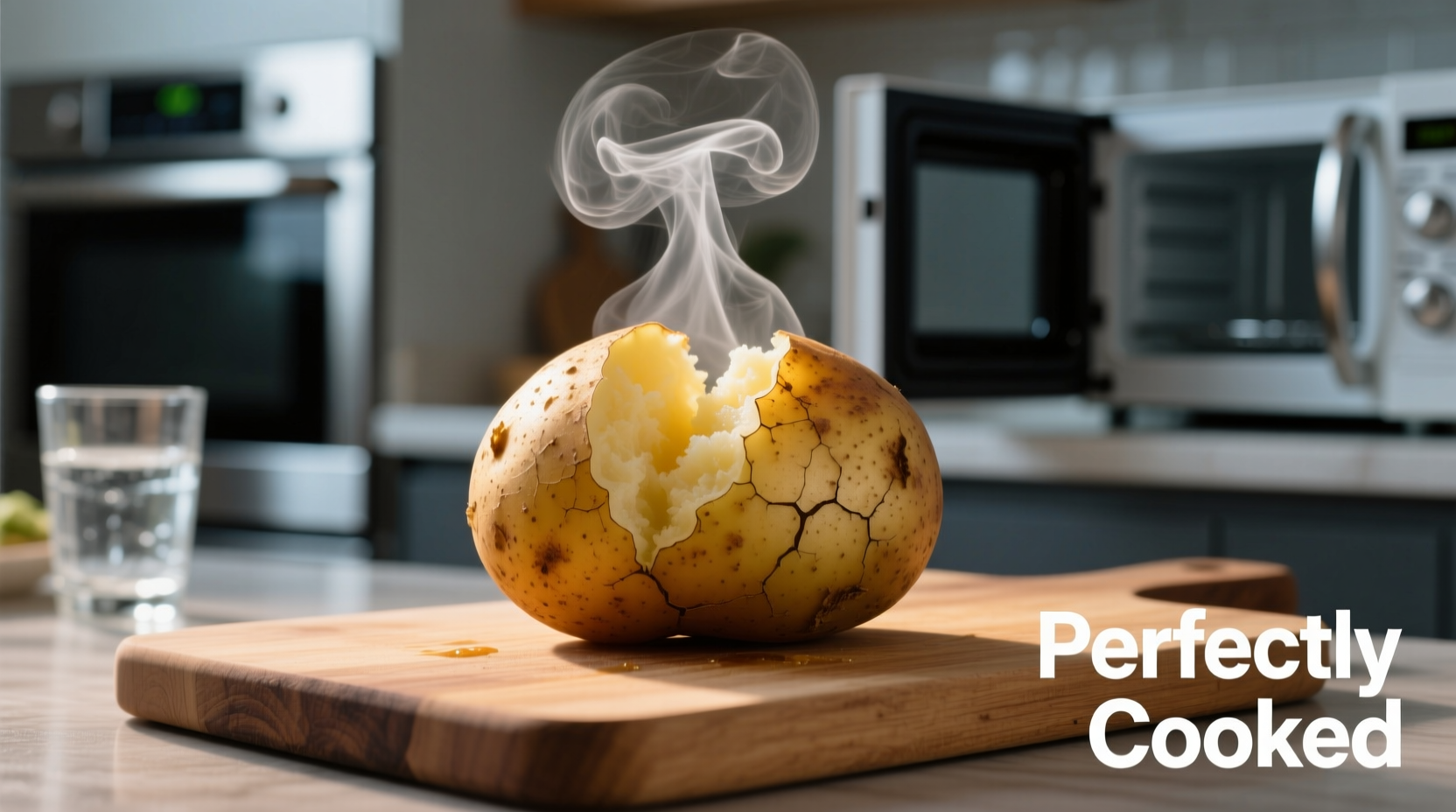The Science Behind Perfectly Microwaved Potatoes
Understanding microwave cooking physics transforms your potato preparation from guesswork to precision. Microwaves excite water molecules within the potato, generating heat from the inside out. Unlike conventional ovens that rely on external heat transfer, this method cooks potatoes approximately 75% faster while preserving more nutrients according to USDA research on vegetable preparation methods.
Step-by-Step Preparation Process
Follow these professional chef-tested steps for consistently perfect results:
1. Selecting and Preparing Your Potato
- Choose firm potatoes without green spots or sprouts
- Wash thoroughly under cold water using a vegetable brush
- Pierce 4-6 times with a fork to prevent steam explosions
- Leave skin on for maximum nutrient retention
2. Optimizing Microwave Placement
Place potatoes directly on the microwave turntable or on a microwave-safe plate. For multiple potatoes, arrange them in a circle with space between each to ensure even cooking. Never use metal containers or aluminum foil, which can cause dangerous arcing.
| Size Category | Weight Range | Microwave Time | Resting Time |
|---|---|---|---|
| Small | Under 6oz (170g) | 5-7 minutes | 2 minutes |
| Medium | 6-10oz (170-280g) | 8-10 minutes | 3 minutes |
| Large | Over 10oz (280g) | 10-12 minutes | 4 minutes |
Adjusting for Your Microwave's Power
Microwave wattage significantly impacts cooking time. Most home microwaves operate between 600-1200 watts. The University of Minnesota Extension recommends these adjustments:
- 700W microwave: Add 1-2 minutes to standard times
- 800-900W microwave: Follow standard timing guidelines
- 1000W+ microwave: Reduce time by 1-2 minutes
Flip potatoes halfway through cooking to ensure even heating. This simple step prevents cold spots and creates uniform texture throughout.

Verifying Proper Doneness
Don't rely solely on time - use these professional verification methods:
- Gently squeeze with oven mitts: Should yield slightly to pressure
- Insert fork: Should slide in with no resistance
- Check internal temperature: Must reach 205°F (96°C) for ideal texture
- Look for skin separation: Small cracks indicate proper cooking
The USDA Food Safety and Inspection Service emphasizes that potatoes must reach a minimum internal temperature of 160°F (71°C) for safety, but culinary professionals recommend 205°F for optimal texture and flavor release.
Safety and Storage Guidelines
Follow these critical safety practices:
- Always use oven mitts when handling hot potatoes
- Allow proper resting time before cutting to prevent steam burns
- Store leftovers within 2 hours in airtight containers
- Refrigerate for up to 5 days or freeze for 6-8 months
According to food safety experts at the National Center for Home Food Preservation, cooked potatoes left at room temperature for more than 2 hours enter the danger zone where bacteria multiply rapidly.
Pro Chef Techniques for Enhanced Flavor
Elevate your microwaved potatoes with these professional tips:
- Brush with olive oil and sprinkle with sea salt before cooking for crispy skin
- Add herbs like rosemary or thyme to the plate for infused flavor
- Wrap in a damp paper towel for extra moisture control
- Finish with a brief broil for restaurant-quality texture
Troubleshooting Common Issues
Solve these frequent problems:
- Hard center: Increase cooking time in 1-minute increments
- Soggy texture: Reduce cooking time or skip the paper towel
- Uneven cooking: Rotate potatoes more frequently during cooking
- Exploded potato: Pierce more thoroughly before cooking
When Microwaving Isn't Ideal
While convenient, microwaving has limitations. For certain applications, consider alternative methods:
- Baking: Better for crispy skin and even browning
- Boiling: Preferred for mashed potato preparation
- Air frying: Creates superior texture for potato wedges
Microwaving excels when speed is essential, but for special occasions or specific textures, traditional methods may deliver superior results.











 浙公网安备
33010002000092号
浙公网安备
33010002000092号 浙B2-20120091-4
浙B2-20120091-4